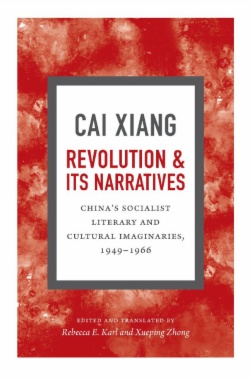Published in China in 2010, Revolution and Its Narratives is a historical, literary, and critical account of the cultural production of the narratives of China's socialist revolution. Through theoretical, empirical, and textual analysis of major and minor novels, dramas, short stories, and cinema, Cai Xiang offers a complex study that exceeds the narrow confines of existing views of socialist aesthetics. By engaging with the relationship among culture, history, and politics in the context of the revolutionary transformation of Chinese society and arts, Cai illuminates the utopian promise as well as the ultimate impossibility of socialist cultural production. Translated, annotated, and edited by Rebecca E. Karl and Xueping Zhong, this translation presents Cai's influential work to English-language readers for the first time.

